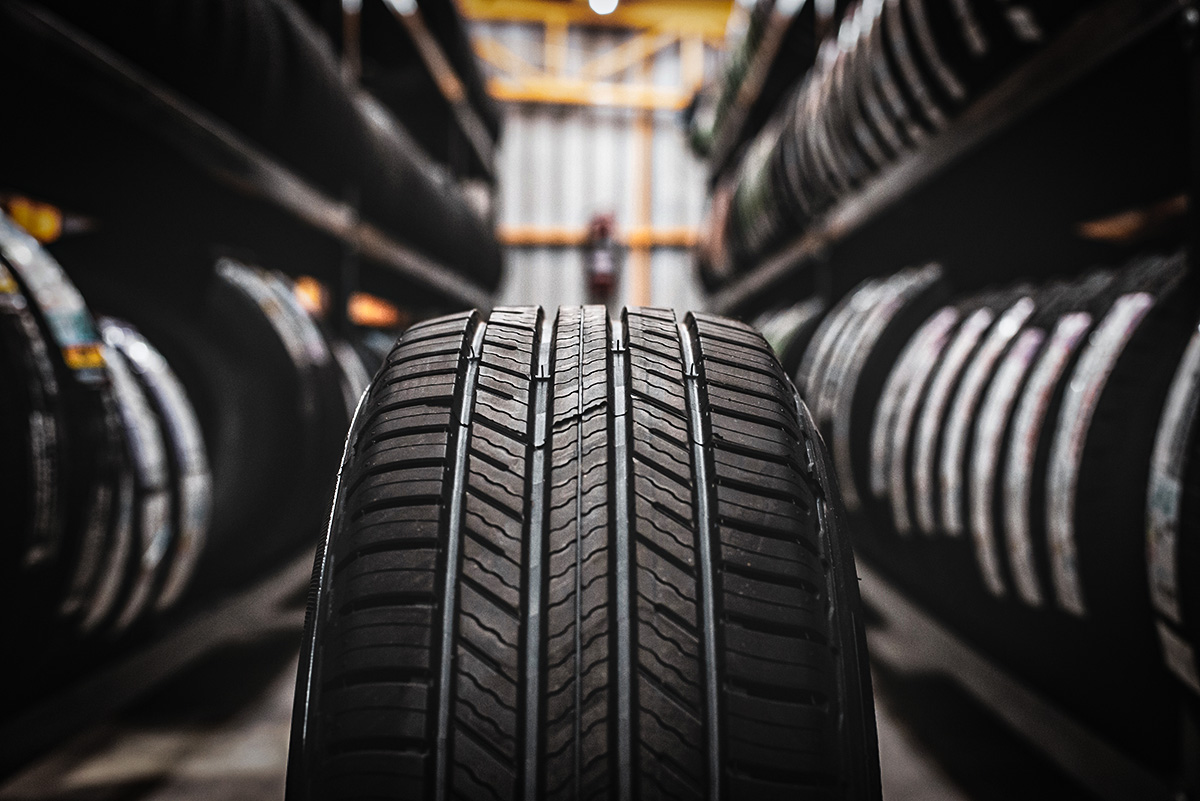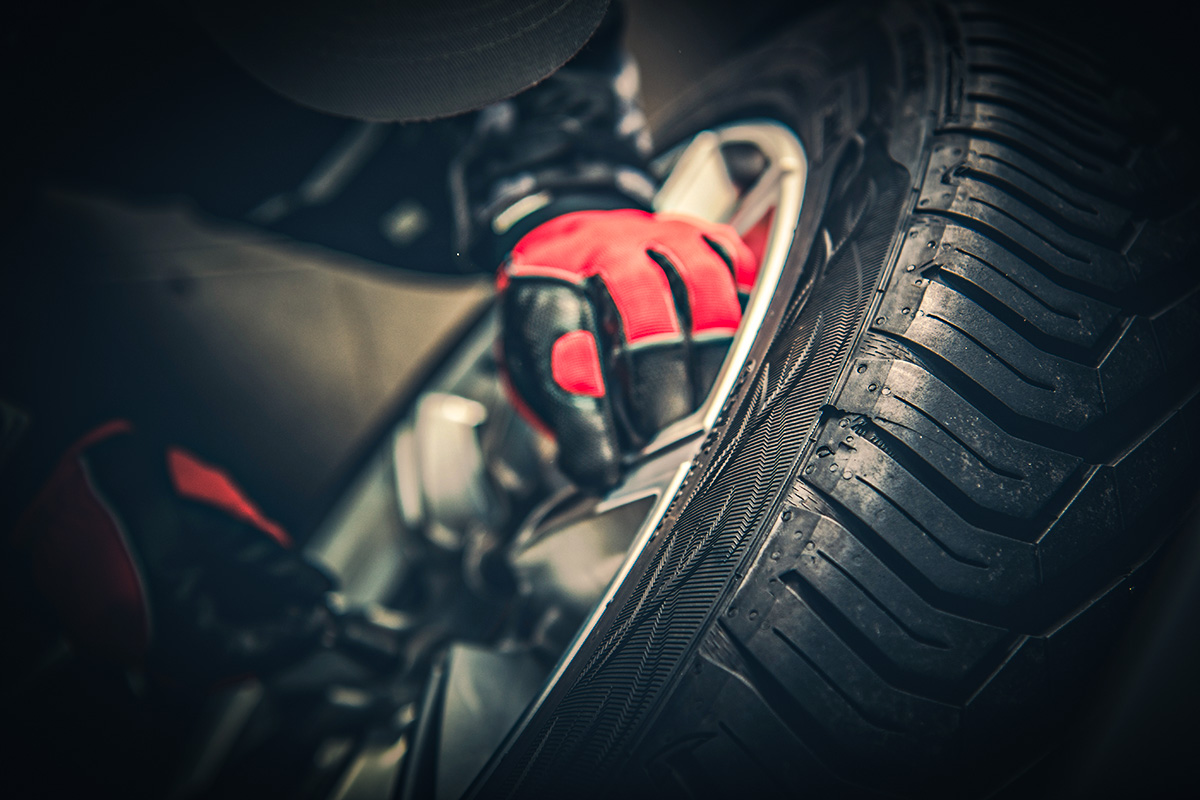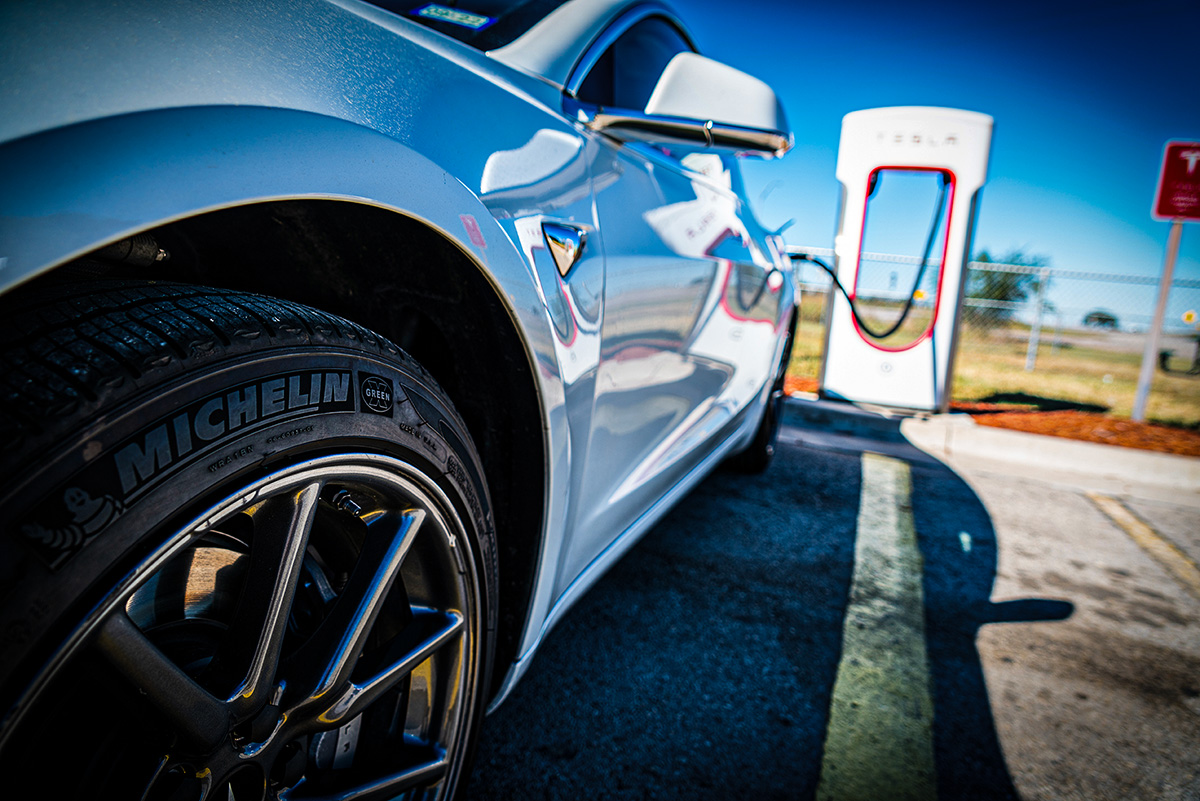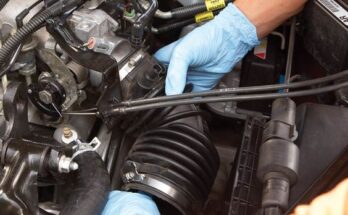Recently, my Shop Press colleague Andy wrote a piece about vehicle weights increasing and whether your lifts can handle it. Much of that increase in weight is due to hybrid and electric vehicles, which can be especially heavy with their batteries and motors. That increased weight also does a number on the vehicles’ tires. Considering that, here are some suggestions for you and things to bear in mind as EVs become a more common sight in your shop.

Photo: istock.com/Chonlatee Sangsawang.
Inform your customers
While EV sales are slowing down, there is still certainly a market for them as governments, customers, and manufacturers try to reduce overall emissions. However, EVs and hybrids wear through tires faster, due to both their heaviness and their instantaneous power and torque delivery relative to ICE vehicles. According to a J.D. Power press release, EV owners are uninformed of faster tire wear due to heavier hybrid and EV vehicles, leading to lower customer satisfaction when this difference is discovered.
The fact that EVs wear through tires faster is probably not news to someone in the auto industry, but your average customer doesn’t know this. This is a failure of the industry to educate EV owners, but the issue is unlikely to go away soon. A car salesperson is likely not going to bring up this issue with a potential customer, particularly with EV sales slowing, and unless tire manufacturers make some breakthrough in tire composition/construction, late model EVs will continue shredding tires for as long as they’re on the road.
Which leads to my suggestion for you: if you have customers who just brought in their first EV or hybrid to your shop, let them know about faster tire wear on their new vehicle. Yes, I understand that this may not be the easiest conversation to have, particularly if they are still in the new car honeymoon phase. But it’ll be a much easier conversation to have now as opposed to when you tell them later that they need a new set of tires much earlier than they expected, especially because EV-specific tires are more expensive than those made for regular ICE vehicles. To ease the pain, you can acknowledge that many of the service and maintenance costs associated with ICE vehicles are simply nonexistent for an EV.
If you have customers who just brought in their first EV or hybrid to your shop, let them know about faster tire wear on their new vehicle.
An easy way to ease this conversation is to advise your customers on how to get more life out of their tires: rotate tires every 5-6,000 miles, check tire pressure frequently (can be as simple as keeping an eye on TPMS), and have alignments done when needed. I spoke to Scott Castner, Product Manager at Dorman (who has over 20 years of experience at regional tire service companies as an automotive technician, store manager, and regional director) and he recommended promoting to your customers that your shop will rotate any future tires the customer buys for free if the tires are bought from you. This fact in particular could help ease the conversation about faster tire wear.
Another way to ease this conversation may be to liken EV and hybrid tire wear to that of motorcycles, which have a similar speed to putting down power and torque. A lifespan of 5,000-10,000 miles on a set of motorcycle tires is about average.
I spoke about this with my aforementioned Shop Press colleague Andy, and he said, “Rapid acceleration and high-performance brakes can wear tires down in a hurry. Motorcycles and EVs tend to speed up and slow down faster than daily driver ICE vehicles on the road, so customers might be surprised to learn that traditional ICE tire change intervals (60,000 miles or more) aren’t feasible. Instead, motorcycles can usually get 5,000 to 10,000 miles of mild street riding between tire changes, while EVs might need new tires between 6,000 and 20,000 miles.”
“Although operator habits can dramatically affect tire life, there are other factors that can’t be avoided. For motorcycles, tire wear is spread over two tiny contact patches. EVs have four larger contact patches and tougher tires, but they weigh thousands of pounds more than motorcycles. When accelerating from a stop, EVs deliver loads of torque to the driven wheels instantly. EV braking (both standard and regenerative) can put even more strain on the tires. If you’re buying an EV, a motorcycle, or an electric motorcycle, you should consider these extra costs when budgeting for your new vehicle. All the latest and greatest tech won’t matter if you’re rolling around on bald tires.”
Sure, having to inform your customers about faster tire wear is an unfair position to be in because of a lack of education in the car-buying process, but it’s better to let them know now rather than later. And you may even have some customers who appreciate the heads-up!

Photo: istock.com/welcomia.
Consider hiring more tire techs
If you have a customer with a large EV fleet, you’re likely going to have more tire work. Rivian R1Ts and R1Ses are reportedly chewing through tires as fast as every 6,000 miles. Those models are outliers, but the fact remains that hybrid and EV drivers are going to go through tires faster, which means more tire business for you. As such, you may want to consider hiring more tire techs (or at least a tire specialist) to handle that increased work and free up your other techs for other jobs.

Photo: istock.com/oschetzkyIstockPhoto.
Use it to your advantage
An industry change like this can be advantageous to your marketing and sales. How about a promotional tire wear gauge you can hand out to customers with your shop’s logo on it? If you’ve warned your hybrid and EV owner customers that they’ll go through tires quicker, that promo tire wear gauge is going to be a nice reminder to take their vehicles back to your shop when they’re checking tread.
If you have a direct account with a tire manufacturer, be willing to work with the tire manufacturing company to cover when tread life wears out before the milage covered by the manufacturer’s warranty—and promote this fact. Again, speaking with Scott Castner, he mentioned that when he was a shop manager, he would advertise this with a large sign outside the shop that told customers they handled all tire warranty issues with the manufacturer, even if the tires weren’t bought from them. These are just a few examples to consider, but there may even be more creative ways that this change can benefit your shop.
If the market for hybrid and EV vehicles increases in the future, there will certainly be increased tire work for you. It’s best to think now about how this may impact your business!


